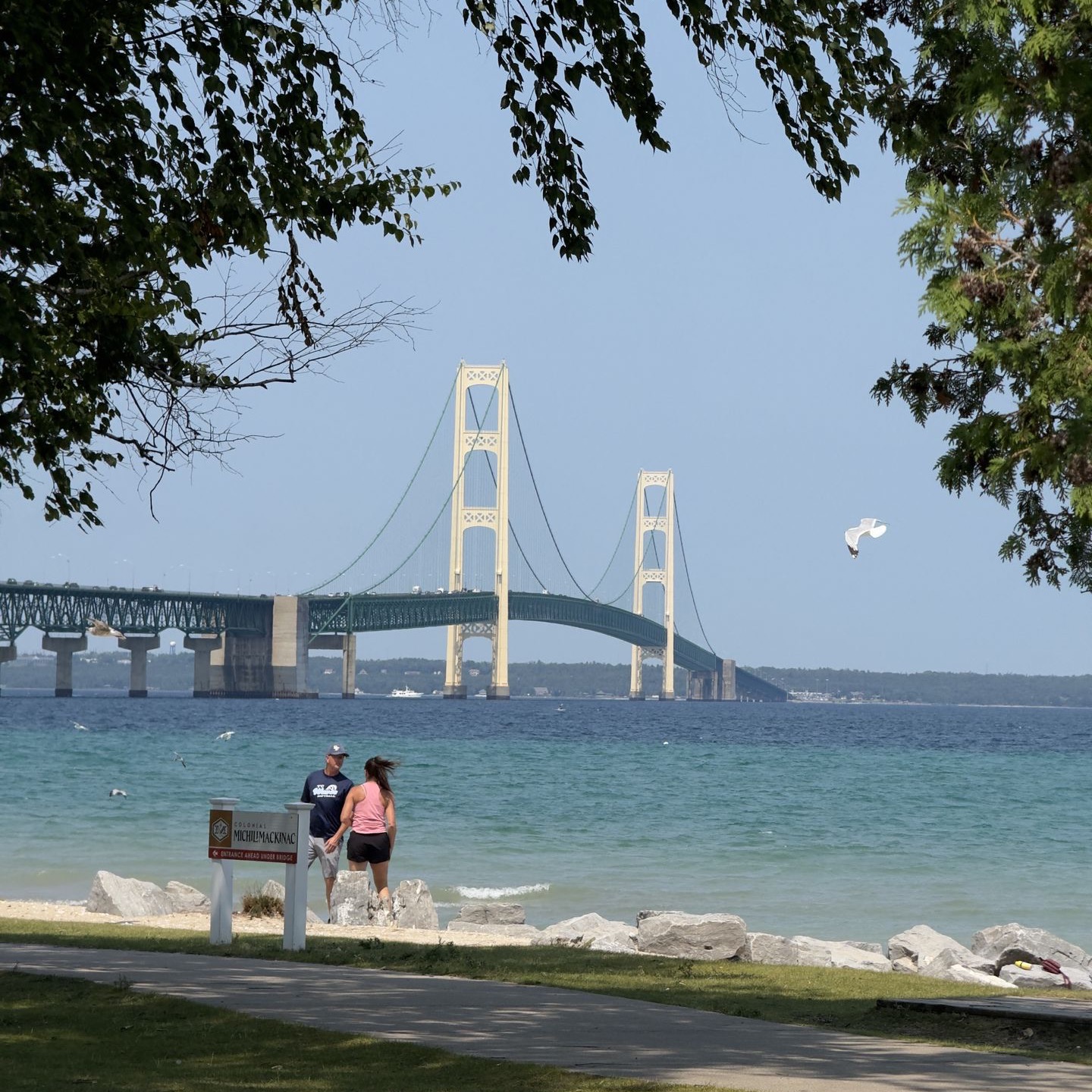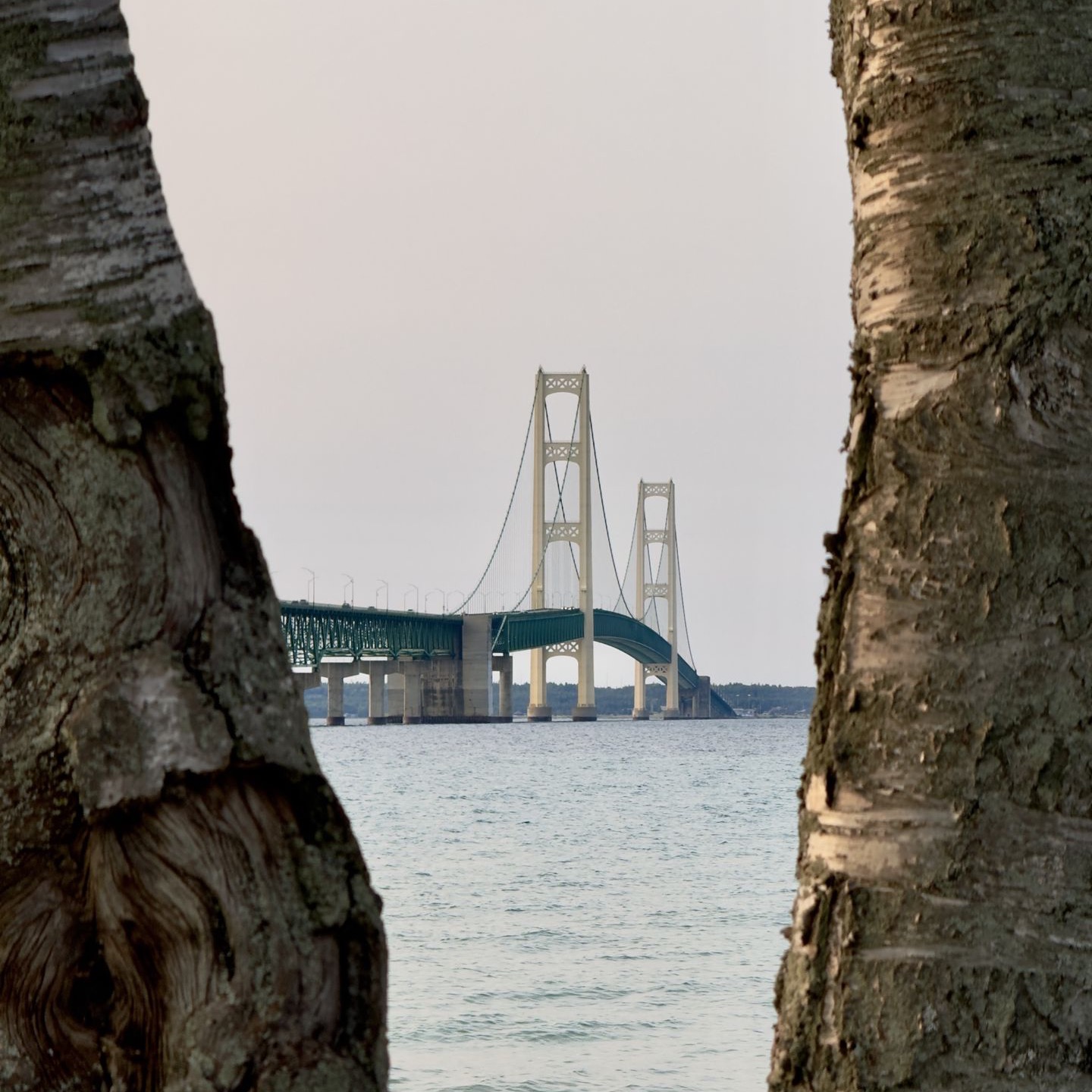The Mackinac Bridge, affectionately known as the "Mighty Mac," is one of the most breathtaking and significant engineering achievements in the United States. Spanning the Straits of Mackinac, this suspension bridge connects Michigan’s Upper and Lower Peninsulas, making travel between the two seamless and efficient. More than just an impressive structure, the bridge carries with it a rich history and cultural significance for the people of Michigan and beyond.

A Brief History
Before the Mackinac Bridge was built, traveling between Michigan’s peninsulas was a challenge. Ferries transported vehicles and passengers across the Straits of Mackinac, but during busy seasons, wait times could be several hours long. Recognizing the need for a more reliable transportation route, the state of Michigan approved the construction of a bridge, and in 1954, work on the Mackinac Bridge officially began.
Designed by renowned engineer David B. Steinman, the bridge was a massive undertaking, requiring over three years of construction before its completion in 1957. At the time, it was the longest suspension bridge in the world between anchorages, and today, it remains the longest suspension bridge in the Western Hemisphere.

Engineering Marvel
The Mackinac Bridge is an impressive feat of engineering. Stretching 5 miles (26,372 feet) in total length, with a central suspension span of 3,800 feet, it soars 552 feet above the water at its highest point. The bridge’s towers, cables, and roadway are designed to withstand extreme weather conditions, including the high winds and icy waters of the Great Lakes region.
One of the most fascinating aspects of the Mackinac Bridge is its ability to flex and move with the wind. Engineers designed the structure to sway slightly—up to 35 feet in strong winds—to prevent structural damage. This flexibility ensures the bridge remains safe and stable even in harsh conditions.

A Symbol of Michigan
More than just a functional piece of infrastructure, the Mackinac Bridge is a cherished symbol of Michigan pride. It connects not only the state's two peninsulas but also its people, history, and economy. Each year, thousands of visitors cross the bridge, whether by car or on foot during the annual Mackinac Bridge Walk on Labor Day.
The Mackinac Bridge Walk is a beloved tradition that started in 1958 and continues to draw tens of thousands of participants every year. The event allows pedestrians to walk the full length of the bridge, taking in the spectacular views of the Great Lakes and the surrounding landscapes.

Visiting the Mackinac Bridge
If you’re planning a trip to Michigan, a visit to the Mackinac Bridge is a must. Whether you’re driving across it to explore the beauty of Mackinac Island, enjoying the historic sites in Mackinaw City and St. Ignace, or simply stopping to take in its majestic presence, the bridge offers an unforgettable experience.
For those interested in learning more about the bridge’s history and construction, the Mackinac Bridge Authority operates a museum in Mackinaw City that provides fascinating exhibits and information about this remarkable structure.
Conclusion
The Mackinac Bridge is more than just a roadway—it is a testament to human ingenuity, perseverance, and the deep connection Michiganders have to their state. Whether you cross it for practical travel, admire it for its beauty, or take part in the annual bridge walk, the Mighty Mac remains one of the most iconic landmarks in the United States.